By: Toby Hagon
In addition to the state-based limits restricting how fast you can travel when towing, some cars also have their own limits.
Towing heavy loads requires some serious planning, calculations and an adjustment to how and where you drive. A huge part of the towing equation is also the speed at which you travel.
Adding a few tonnes of trailer to a car can significantly change the way it behaves, starting with how long it takes to stop and how the car behaves around corners and over bumps.
That’s partly why the Western Australian government stipulates a maximum towing speed limit of 100km/h.
RELATED:
That makes WA the only state or territory that requires vehicles with trailers to travel at a slower speed than the posted maximum no matter what it is you’re towing.
Even with a box trailer or small boat hitched up, Western Australians are legally limited to 100km/h.
Know the limits around the country
That said, there are lower speed limits in other parts of the country depending on what you’re towing.
In NSW, for example, if the gross combination mass – the weight of the trailer, car and everything in each of them - exceeds 4.5 tonnes, then you can’t legally drive over 100km/h.
Modern SUVs can easily tip the scales at more than 2.5 tonnes, so you could breach the NSW speed limit just by lugging a modest trailer weighing less than two tonnes. Not that it’s an onerous rule.
Kim Ledger is the managing director of Perth-based Driver Risk Management, which conducts towing courses in conjunction with RAC.
He thinks the 100km/h limits are a sensible measure, even in the vast open expanses of regional WA.
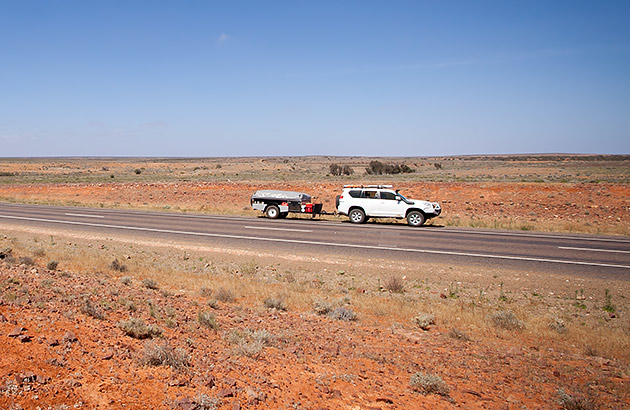
He recommends drivers who are towing don’t exceed 100km/h “because all you’re doing is multiplying the potential for problems if something goes wrong.
“A lot of things can go wrong at 100km/h,” says Ledger, adding that stopping distances can change ‘quite dramatically’ when towing a trailer. Having a combined load upwards of six tonnes takes a lot longer to stop, especially considering that with a trailer on board, you need to keep everything pointing straight to be able to maximise braking force.
He says physics conspires against big speeds when towing. Without a load on board, a car takes four times longer to stop from 100km/h than it does from 50km/h.
With a trailer in tow, the equation gets worse - something drivers need to be aware of.
“When you have a bigger load – and basically an articulated load – you have to be very aware of your speeds,” says Ledger.
Check your owner’s manual
While many people are aware of the different state and territory speed limits around towing, many do not realise there are limitations placed by manufacturers.
Buy a Ford Ranger, Everest or F-150, for example – three towing favourites among Australians - and the manufacturer recommends a maximum speed of 100km/h.
It follows on from two discontinued Fords – the Falcon and Territory – that had towing speed limits as low as 80km/h, depending on the speed and weight being hauled. Manual models of more recent Australian-made Commodores also placed a 100km/h limit on towing.
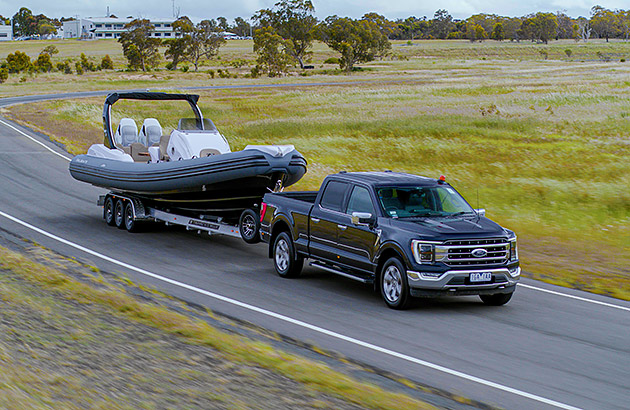
A Ford spokesperson said that the heavier the weight, the more drivers needed to take care. Referencing the NSW-stipulated 4.5-tonne gross combination mass (GCM) limit, the company said drivers should not exceed 100km/h.
“There is general agreement that once you reach 4500kg GCM you should not exceed 100km/h, which is what Ford recommends as the maximum speed for towing in markets around the world.”
The spokesperson added that the towing speed limit was “a global statement that appears across Ford product around the world.”
Some Toyota Prados limited to 100km/h
Ford is not alone.
Modern Toyotas don’t have recommended speed limits for towing, but later iterations of the recently superseded Prado 150-Series did.
The owner’s manual of those Prados stated that owners should “not exceed the established speed limit for towing a trailer in built-up areas or 100km/h, whichever is lower.”
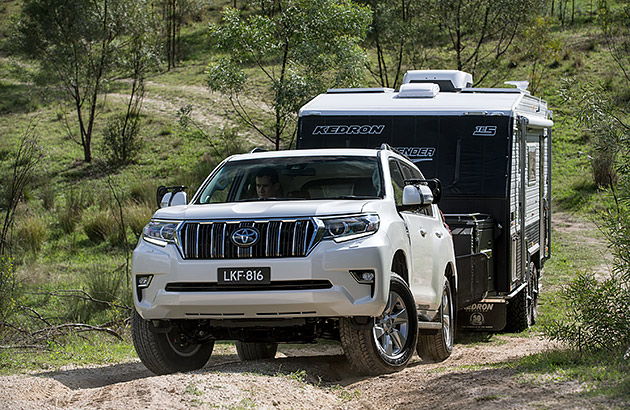
And the warning is stark: “Failing to observe this precaution may lead to an accident causing death or serious injury.”
It’s not clear why earlier versions of the 150-Series didn’t have towing speed limits – the model hit the market in 2009 before being replaced in 2024 – but engineers clearly decided a warning was necessary.
Interestingly, the LandCruiser 200-Series of the same era had no such speed restrictions on towing.
And the just-released Prado 250-Series has no towing speed limits.
Subarus limited to 80km/h
The modern cars with the lowest speed limits for towing are Subarus.
Until recently all Subarus that can tow were limited to 80km/h.
A warning in the owner’s manuals states that “exceeding the speed limit could cause loss of vehicle stability and/or could lead to an accident.”
When contacted, a company spokesperson said the focus was on safety.
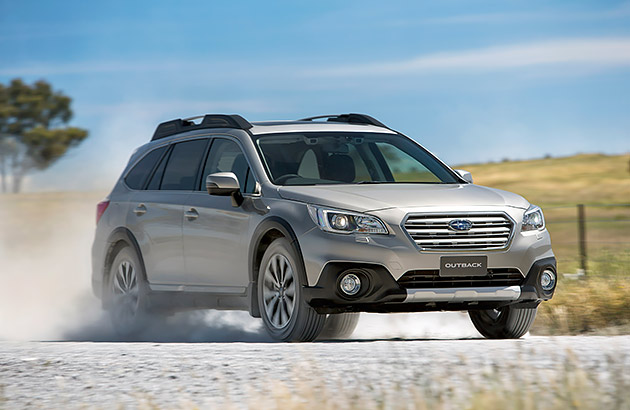
“This tip aims to promote safer driving while towing, as the vehicle’s dynamics are significantly altered due to the added load,” the statement read, while adding that “extra caution should always be taken when towing a trailer.”
“When towing a trailer, factors such as steering, stability, stopping distance, and braking performance are all altered when compared to driving without a load.”
There is one exception to the Subaru 80km/h towing limit: the Solterra electric SUV. Yep, it’s ironic that the one car many wouldn’t consider towing with – an EV – is the one that Subaru says is fine to drive at 100km/h (or even 110km/h outside WA), whereas an Outback or Forester, which is more likely to have a caravan or boat in tow, has a lower recommended towing speed limit.
While the Solterra’s tow capacity is quite low – just 750kg – the company still allows owners to tow at whatever the state limit is.
That could be because the Solterra is effectively a rebadged Toyota bZ4X. The two were codeveloped and come out of the same factory.
Beware of other road users
You don’t have to travel far around the country to see motorists getting frustrated with people towing because they may be travelling slower.
It’s a particular issue with commercial vehicles that can spend much of the week on the road, according to Driver Risk Management’s Kim Ledger.
“The roadways are the lifelines for truckies and the transport industry generally,” he says.
“They like to try and stick at their road speed limits all the time … and they can be interrupted by caravanners.”
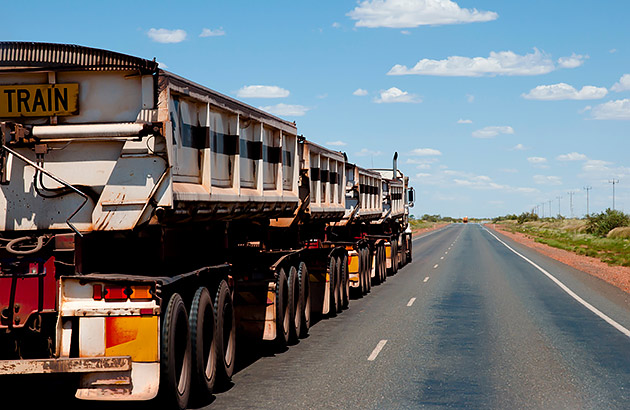
He says if you’re driving a car with a lower towing limit – as low as 80km/h – it pays to pay more attention to following motorists.
He adds that drivers should allow those people who are making a living on the road to pass when it’s safe to do so.
“It’s better to give way and allow them the rite of passage, depending on the circumstances.”
All of which comes back to one simple principle: being respectful of other road users.
“Courtesy is everything on the road,” says Ledger. “It’s part of a missing mindset in our driving culture.”
A lot more than speed
There’s a lot more to towing than simply containing your speed, as Ledger points out. He says keeping the trailer straight when braking is crucial.
“At all times when you’re braking, the vehicle must be kept in a straight line,” says Ledger.
“You have to stay in a straight line and squeeze the brake; always try to keep everything in a straight line.”
And he says slowing down is generally the best solution if you get into a sticky situation, especially if you dip a wheel off the road or the trailer starts to sway.
“There is no sense in speeding through those situations,” he says.
“There is never a situation [when towing] where you should be applying the throttle … there’s only one resolution and that’s to slow down and allow both your vehicle and your load to stay in a straight line.”
A good way to save fuel
Slowing down when towing could also save your hip pocket.
Aerodynamic drag increases quickly, making the engine work harder to push air out of the way.
And most things we tow aren’t particularly slippery through the air; many caravans are effectively big boxes that provide plenty of aerodynamic drag, as do some boats.
So slowing down when you’re towing can have a significant impact on fuel economy. In the long run it could mean stopping for fuel less frequently.
Do your research
The big take-out when towing is to do your research before you hit the road. It’s important not just to ensure you’re abiding by the law but also for your safety and the safety of other road users.
And that research needs to extend beyond calculating the maximum load limits, which is in many ways the first step.
Also check the vehicle owner’s manual, which may include tips and warnings beyond just speed.
Finally, if you’re crossing the state border, make sure you check with the appropriate state and territory regulations to ensure you’re staying legal.
